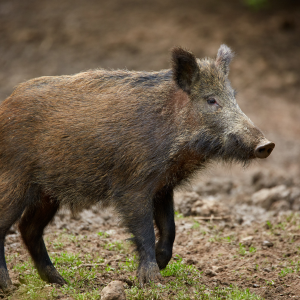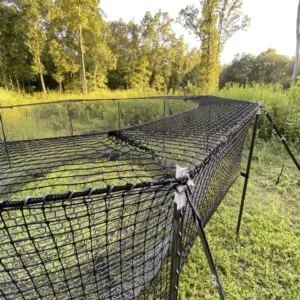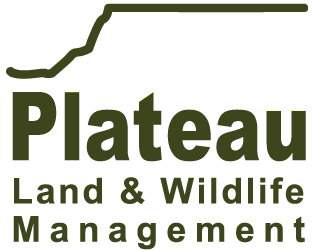Feral Pigs in Texas: What Landowners Need to Know (and Do About Them)
Wild pigs, also called wild hogs, feral hogs, wild boar, or feral swine, and many other names across the globe, are among the most destructive invasive species in North America. Texas holds the largest population in the United States, with estimates of more than 2.5 million animals within its borders. These invasive swine uproot native vegetation, degrade water sources, spread disease, and cause billions of dollars in agricultural and property damage every year.
At Plateau, we work alongside landowners every day who are dealing with this challenge. While controlling wild pigs is not easy, there are proven strategies that can reduce damage and protect your land.
Why Feral Swine Thrive
Wild hogs are highly adaptable. They reproduce quickly, eat almost anything, and face few natural predators in the United States. Because of these traits, populations can increase by nearly 20 percent each year.
Research shows that, in some areas, 66 to 70 percent of a population must be removed annually just to hold numbers steady. In Texas, current efforts average only about 29 percent removal each year. That gap explains why populations and damages continue to rise. Without consistent management, feral swine will continue to cause irreversible damage where they are and spread into new areas.
Control Methods and Their Limitations
Over the years, a variety of methods have been used to manage feral pigs. Each has advantages but also important limitations tied to geography, terrain, or cost.

Aerial Gunning
Helicopter or fixed-wing aerial gunning can quickly reduce wild hog numbers across large open landscapes. It is especially effective in South and North Texas, where canopy cover is sparse and pig densities are high. However, effectiveness drops in areas with heavy tree cover, broken terrain, or scattered populations. Costs are high, and multiple contiguous landowners usually need to coordinate to make flights worthwhile.
Targeted Ground Shooting
Ground-based shooting, whether using night vision, thermal optics, or trained dogs, is valuable for targeting individuals or small groups of feral hogs. These approaches are most effective as follow-up methods after trapping or aerial operations. They are time-consuming, labor-intensive, and do not remove enough hogs to achieve large-scale reductions.
Recreational Hunting
Recreational hunting of wild pigs generates interest and might occasionally help at a small scale, but it does little to slow population growth or curb damage to your property. Trophy hunters often target large boars, yet females and juveniles drive reproduction. In many cases, treating pigs as a game species has even contributed to their spread when animals were illegally moved to new areas.
Bounty Programs
Some counties have tested bounty programs that pay for feral swine tails. Unfortunately, these have consistently fallen short. They are vulnerable to fraud, encourage selective harvest, and rarely remove pigs at the scale needed for population control.
Trapping: The Cornerstone of Wild Hog Control
Trapping remains the most effective and widely applicable tool for landowners. The ability to capture whole sounders of feral pigs at once makes trapping far more impactful than removing a few individuals at a time, and unlike aerial gunning, landowners and managers can conduct this activity themselves.
Traditional Corral Traps
Steel-panel corral traps are effective but heavy, requiring vehicles and equipment to set up and move. They work well in accessible areas but are difficult to deploy in rugged terrain, creek bottoms, or remote pastures. They don’t allow you to go where the pigs are in times of tough trapping, but rely on bait to entice the swine to deviate from their natural movement patterns. In times of high natural food availability, this is often a futile effort.
“Smart Traps”
Technology-driven smart traps use cellular cameras and remotely triggered gates. They allow operators to capture entire sounders more efficiently, but they require reliable cellular service, subscriptions, and regular monitoring in the middle of the night. They also have many of the same limitations as traditional corral traps and are also expensive, thus not always practical for every property.
The Pig Brig® Trap System
 The Pig Brig takes a different approach. Developed by wildlife researchers for use in the jungles of Guam, it was designed to be portable, simple, and effective in places where steel traps could not be used. Instead of relying on heavy panels or electronic triggers, the Pig Brig uses a net-based corral design. Pigs root under the skirt to reach bait, and once inside, the design prevents escape. With no gate to close and 360 degree access, you’re more likely to catch the entire sounder AND sleep through the night.
The Pig Brig takes a different approach. Developed by wildlife researchers for use in the jungles of Guam, it was designed to be portable, simple, and effective in places where steel traps could not be used. Instead of relying on heavy panels or electronic triggers, the Pig Brig uses a net-based corral design. Pigs root under the skirt to reach bait, and once inside, the design prevents escape. With no gate to close and 360 degree access, you’re more likely to catch the entire sounder AND sleep through the night.
Because it is lightweight, the Pig Brig Trap System can be carried to remote sites and set up without heavy equipment. Unlike smart traps, it requires no cellular service or ongoing subscriptions. This makes it an option for a single person to trap in areas with thick woods, rugged terrain, or limited access where traditional traps are impractical.
Keys to Success
No matter the trap type, successful wild pig control depends on applying sound strategies:
- Consistency – Traps must be baited and monitored regularly. Sporadic effort rarely delivers results.
- Patience – Pigs need time to acclimate. Pre-baiting for several days or weeks ensures the entire sounder is comfortable entering the trap site before capture.
- Monitoring Behavior – Game cameras are essential to confirm that all feral hogs in a group are using the site and entering the trap reliably.
- Commitment – Hog control is ongoing. Without sustained effort, feral pig populations rebound quickly.
- Good Neighbors – If you aren’t working collaboratively with other landowners in the area, your results won’t last long.
Looking Ahead
There is no single solution for wild hog control. Aerial gunning and ground shooting play supporting roles, but trapping remains the most reliable way to reduce populations across different landscapes.
By understanding the strengths and limitations of each method, landowners can choose the right combination of tools. For some, that will mean steel-panel traps. For others, it may be smart traps or portable systems like the Pig Brig. The key is matching the right tool to the land, the pigs, and the landowner’s capacity for long-term management.
Wild pigs, feral hogs, wild boar, or feral swine, no matter the name, the damage is the same. These invasive swine are a serious and growing threat to Texas land, water, wildlife, and agriculture. But with the right approach, landowners can make meaningful progress.
At Plateau, our role is to provide landowners with the knowledge and tools needed to succeed. Whether through traditional corral traps, advanced smart traps, or innovative systems like the Pig Brig, we are here to help educate Texans to protect their land from one of the state’s most pressing challenges.
Ready to take control of your wild pig problem? Plateau is now an authorized Pig Brig dealer. Call us today or visit here to learn more and get yours.






Sorry, the comment form is closed at this time.